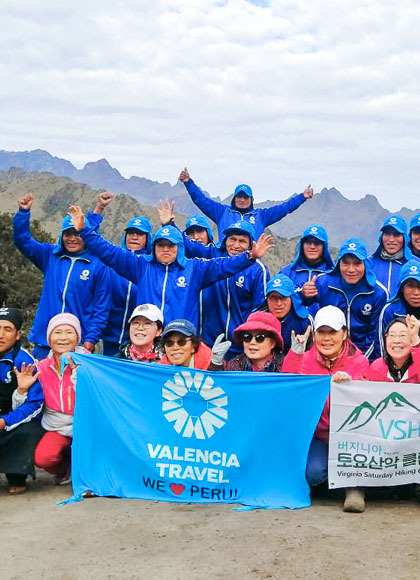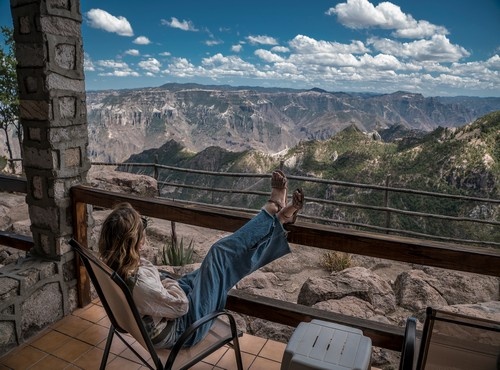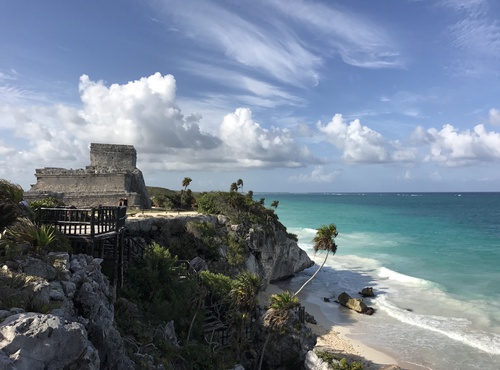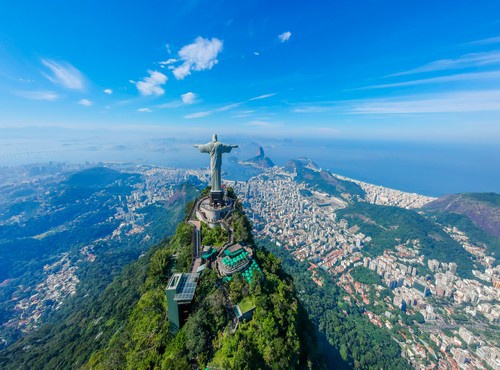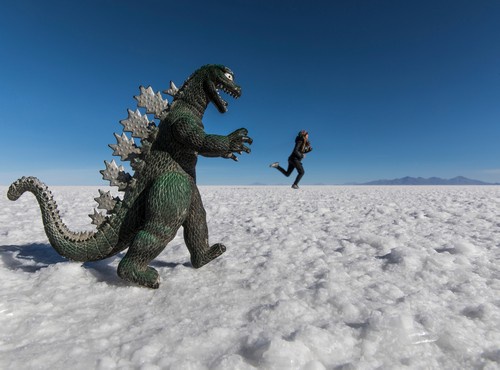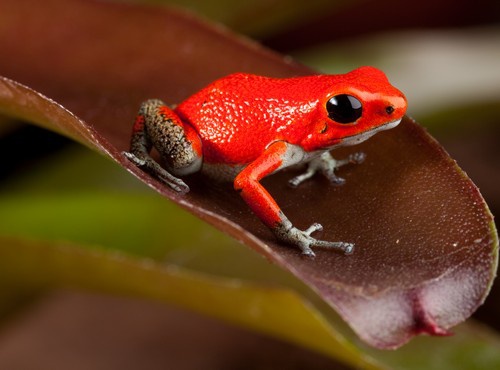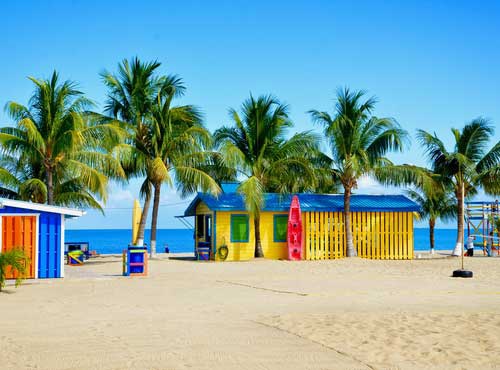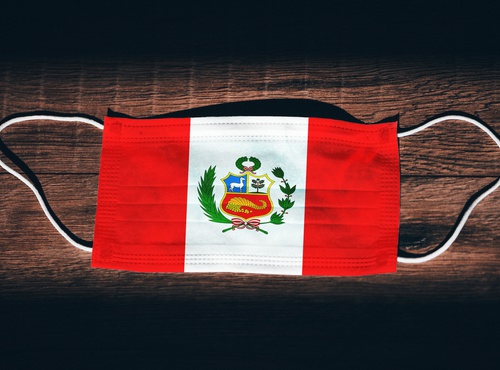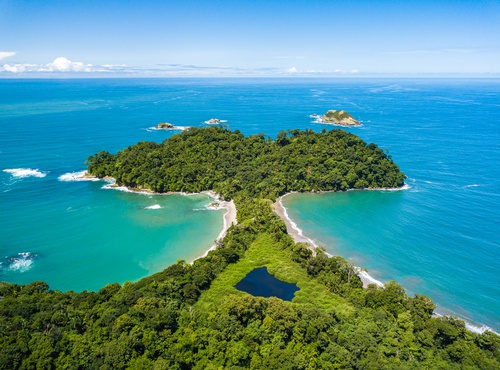
Written by:undefined undefined
Published: 19-09-2021
Chile is one of the very few countries where you can find can find deserts, glaciers, a walk to the end of the world, and volcanic thermal waters! Astronomy, wine, art, and epic road trip lovers, are completely in their element in this adventurous country with unparalleled night-time skies, sumptuous vineyards, epic driving routes through forest and volcanoes or casually sailing by gigantic glaciers! Whether you want to hike in the Andes, kayak on stunning lakes, explore fantastic geological sites, or absorb the healing vibrations of its lush valleys, Chile contains a number of intra-worlds within its borders, for all kinds of interesting activities. Here are just a few!
Hike in Torres del Paine
Torres del Paine National Park is the home of impressive waterfalls, horn-shaped peaks, emerald lakes, and roaming herds of guanacos. Explore the park by hiking the full circuit trek, known colloquially as the “O” The trek takes six to eight days, to trek a giant circle around the park. For those looking for a similar experience but have less time, the “W” trail follows part of the “O” and will take only take you four or five days to hike. One of the highlights of this experience is the grey glacier, which you can hike or climb on this route however you must do this with a company that can provide a guide and equipment.

Torres del Paine
Star gaze
The astronomy capital of the world, Chile, quite randomly has half of the world’s telescopes. San Pedro de Atacama, the Elqui Valley, Antofagasta, Iquique, and La Serena all have star -gazing observatories open to the public. Just outside of San Pedro, the largest astronomical project on the planet, ALMA (Atacama Large Millimetre/submillimetre Array), is open on weekend mornings. You can observe plenty of constellations and celestial bodies simply by heading into the desert at night and looking upwards towards the heavens for a mind-blowing encounter with planetary orbs or even a possible UFO sighting!

Stargazing in Atacama
Austral road
Take a two-week road trip on the Carretera Austral, a 770-mile highway running from Puerto Montt to Villa O’Higgins. This unpaved road offers lovers of the outdoors, the opportunity to hike volcanoes, enjoy lakeside picnics, swim in the wild, and walk-through forests. For those who want to explore at their own pace and get totally off the beaten track in Patagonia, this is the ideal trip for you. If you would rather appreciate nature from the comfort of your car, the route still offers spectacular views of forests, mountains, and wildlife along the way.

Carretera Austral
The Marble Caves
Formed by 6,200 years of waves of the Lago Carrera General, crashing into the walls, the Cuevas de Mármol (Marble Caves) look like something out of a fantasy novel or Lord of The Rings! Decorated with swirls of various shades of blue, white, and grey, creating indents and openings in calcium carbonate cliffs, which have over the thousands of years, formed a spectacular, cave system. You can hire a kayak from a local agency on the main road in Puerto Río Tranquilo to get deeper and closer to this natural phenomenon. An experienced guide is a good idea to understand more about these rock formations and for safety reasons as unexpected winds can make the water difficult to navigate. There is no entrance fee needed at the caves, so you can explore and dawdle at your leisure.

The magnificent marble caves
Easter Island
Easter Island is of course home to the famous giant-headed “Moai” built by the Rapa Nui people, over 500 years ago. These 900 statues can be found all over the island, with half of them located in the Rapa Nui National Park. This UNESCO World Heritage site contains a volcanic crater, where you can swim and the quarry from where the stones were brought to carve these magnificent heads. Early morning is the best time to visit due to fewer people best light for photography. These fascinating guardians of the island have an impressive history, which can be learned about on a guided tour.

Easter Island Moai at sundown
Moon Valley in Atacama
Base yourself out of the bohemian desert town San Pedro de Atacama to visit the Atacama Desert, officially the driest place on the planet. Walk through the rock formations in the Valle de la Luna to feel like Buzz Aldrin landing on the moon. Watch geysers spew out water at El Tatio, the third largest geyser field in the world. Float in salty lagoons at Lagunas Escondidas de Baltinache, and take panoramic photos of Chile’s largest salt flats, The Salar de Atacama.
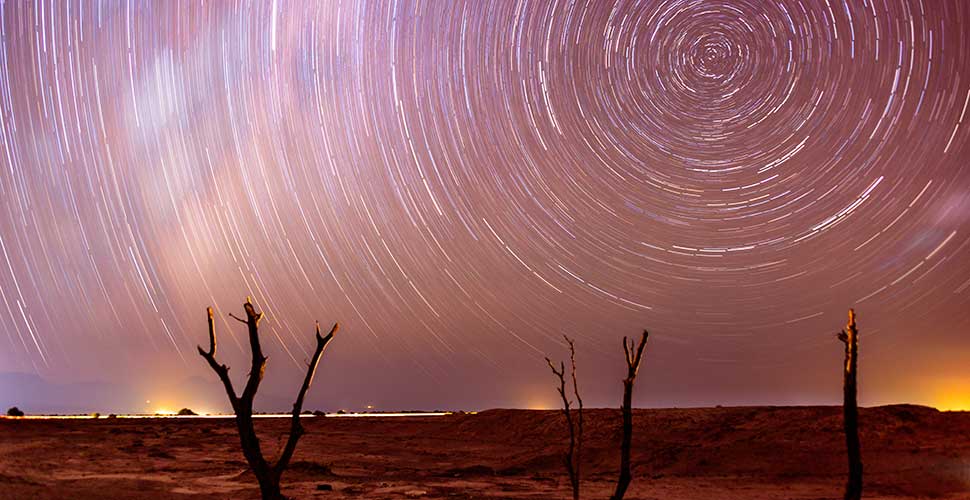
Atacama Desert
VillaRica Volcano
A wooden pathway winds its way through 20 stone pools of thermal pools at the Termas Geometricas Hot Springs, the largest hot spring complex in Chile. Found deep in the forests of Villarica National Park, this oasis is surrounded by rivers, lakes, waterfalls, and the impressive Villarica Volcano, responsible for the underground heating. January and February are an excellent time to visit as the springs are open 24 hours a day, to see the super starry night time skies, while you soak.
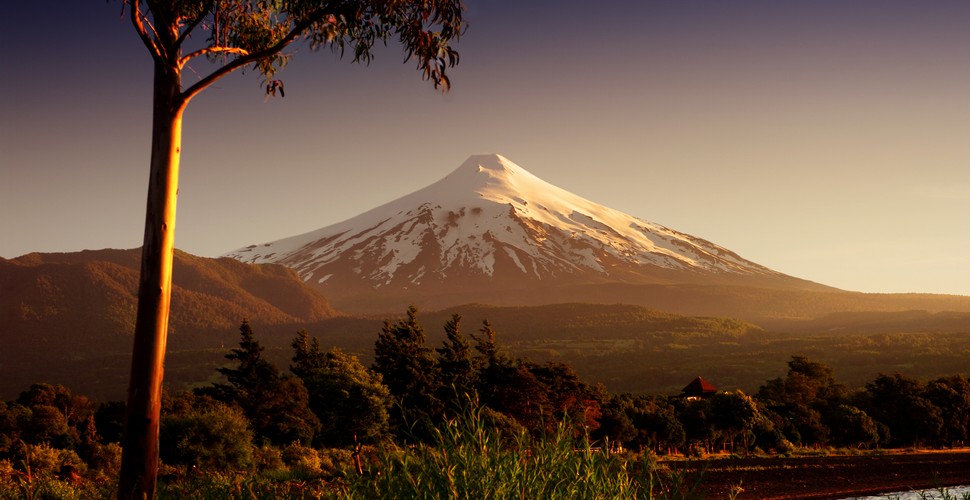
Villarica Volcano
Street Art in Valparaíso
Street art and graffiti spills into the streets, painting the sides of its buildings and running up its stairs. Each one of the 42 hills around Valparaiso has at least one artform on it, making the city look like a seaside carnival. Beethoven Street boasts a giant piano painted on a flight of stairs; The Paseo Atkins to see the massive mural of an indigenous god of abundance, painted by local world-renowned artist, Inti Castro. Wander around or head anywhere uphill and you are guaranteed to come across a painted passageway, political graffiti, or an ornate landscape painted on a wall.
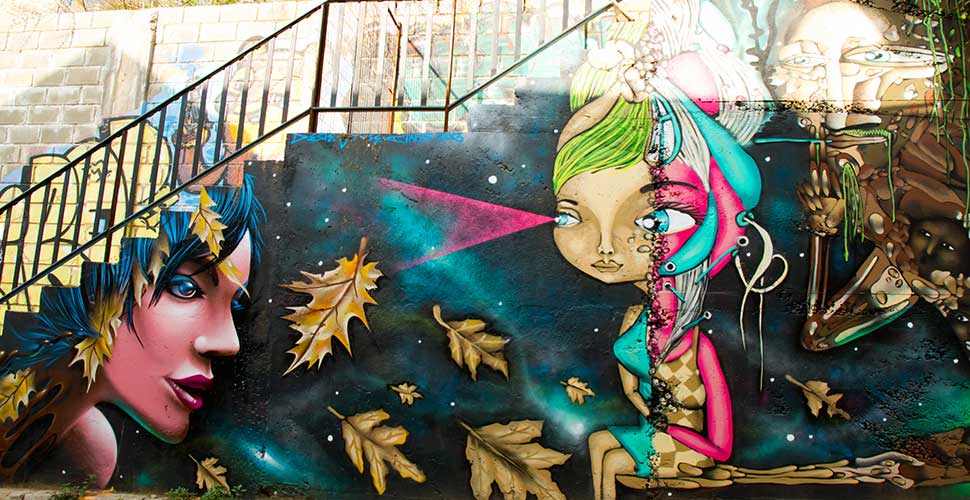
Street art in Valparaiso
Visit Pablo Neruda’s Houses
La Sabastiana, La Chascona, and Isla Negra were Pablo Neruda´s homes in the Chilean capital. Neruda is by far, Chile’s most famous poet and the winner of the Nobel Prize for Literature. These houses became museums after Neruda´s death and La Chascona can be found at the base of San Cristobal Hill in Santiago, La Sabastiana is in Valparaiso, and La Isla Negra, Neruda’s can be found on the island of the same name.

La chascona
Go Wine Tasting
Chile’s incredible geography including an endless coastline and high mountains create unique climatic conditions, in which vineyards easily produce Cabernet, Sauvignon Blanc, Bordeaux, Chardonnay, and Syrah varieties of grapes. Whatever your favourite tipple, head to the valley that specializes in that grape! Red wine varieties thrive in the warmer regions, like Maipo Valley, and whites flourish in the cooler ones, like Casablanca Valley. If you are limited for time, head to the vineyards outside of Santiago. True wine-buffs should visit Chile in March or April and head to the Colchagua Valley, where a giant grape harvest festival occurs and where you can drink the region’s finest tipples and even witness the blessing of a grape!
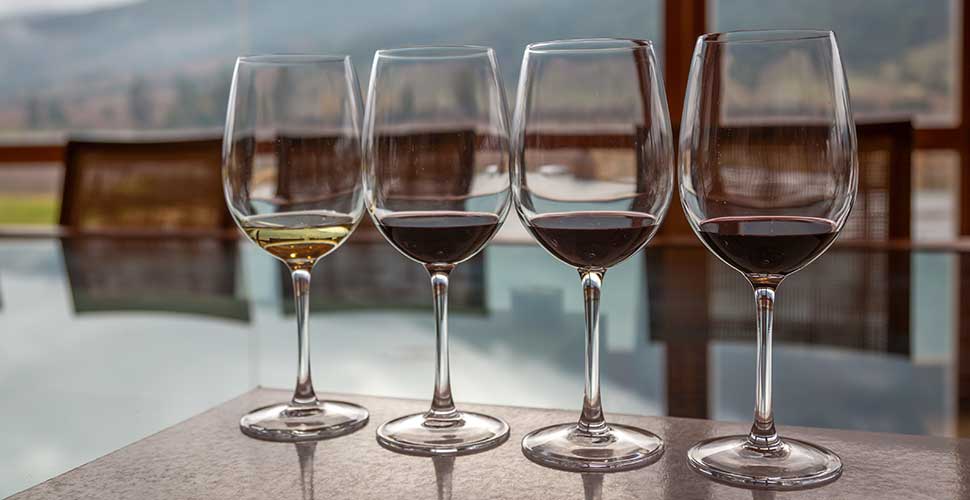
Wine tasting
Walk with Penguins on Isla Magdalena
From Punta Arenas, book a ferry to The Isla Magdalena, home to an astounding number of Magellan penguins. The 30-minute ferry ride, will allow for an hour´s walk on the island to witness penguin nests. November to February is the best time to visit to see baby penguins learning wobbling alongside their parents. The island is also great for spotting austral seagulls and cormorants. The penguins often walk across the wooden path and get quite close to visitors, but bear in mind that these birds should not be approached and touching them is out of bounds.
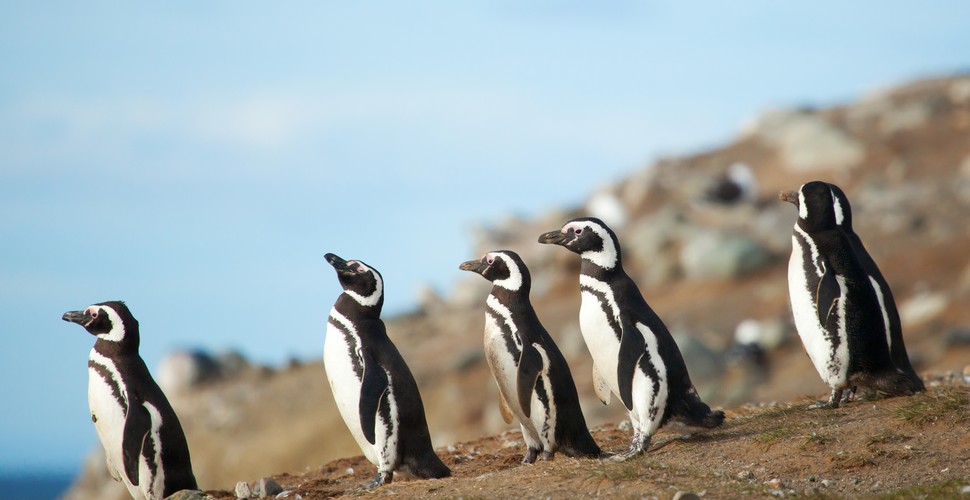
Isla Magdalena
Relax in Elqui Valley
Meadows and farmland for the Pisco-growing grapes, encompassed by the peaks of the Andes, form the mystical Elqui Valley, which is also called the “Ruta de la Sanación” or Healing Path. In the community of Alcohuaz, fields of quartz make the ground literally shine, and local mystics reside in the town of Pisco Elqui. There are many wellness centres throughout the valley, where you can participate in a yoga class, or have a massage. There are a number of places to stay including barns with retractable roofs for stargazing. Or even head out to one of the old-school pisco distilleries for a delicious accompaniment in the valley that just happens to be the pisco producing capital of Chile.

Cycling in Elqui Valley
See a Collapsed Mine
Head to Copiapó just 50 km to the northwest of Santiago, through arid landscape. This is where you can find the Mina San José (San José Mine), world-famous for its collapse with 33 miners inside in 2010! Luckily all of the miners were eventually rescued, the first of whom were rescued 69 days after this world-famous disaster via a specially designed rescue pod. Visitors can tour the site and see where friends and families held vigil for the miners, watch videos of the rescue, and meet one of the original 33, Jorge Galleguillos, who is still the maintenance manager of the site.
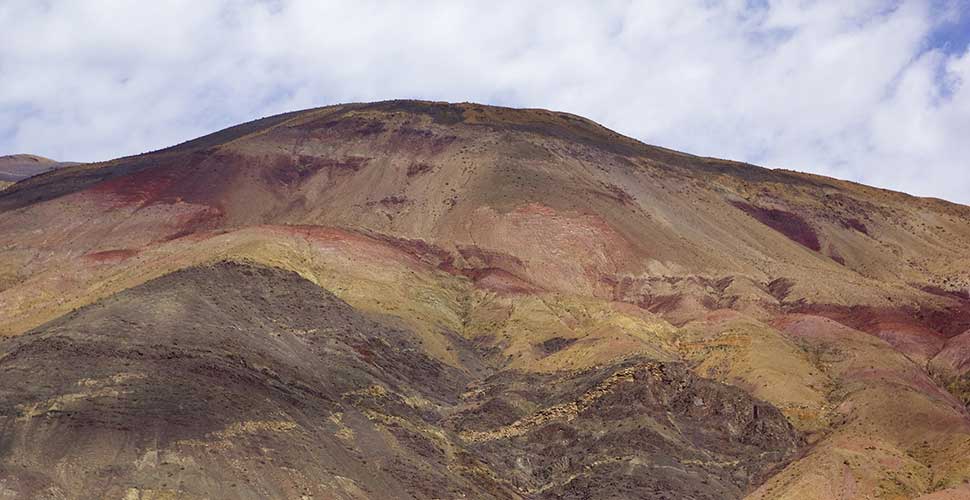
Copiapó mine
Glide by Glaciers in Bernardo O'Higgins National Park
Take a boat from Puerto Natales to see the largest glacier outside of the Antarctic, Pío XI, in the Southern Patagonian Ice Field. The Bernardo O'Higgins National Park contains cormorant colonies, Chilean huemul, marine otters, and magnificent Andean condors flying over these blocks of ice. Once at the park’s edge, spend a few hours hiking through this pristine frozen paradise.
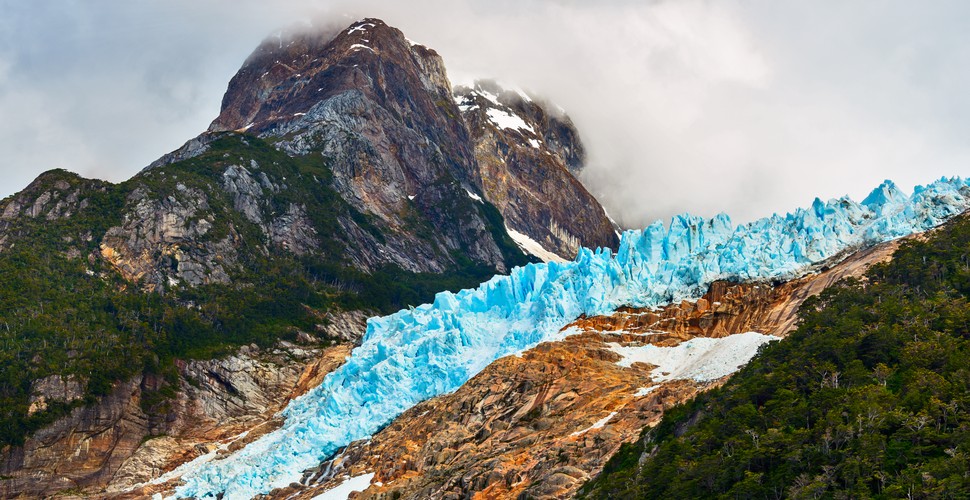
Bernard O Higgins park
Visit Chiloé Island
Brightly coloured houses on stilts characterize the landscape on Chiloé which is also home to some 70 historic churches. Built by the Jesuits in the 17th, 18th, and 19th centuries, 16 of these churches are now recognized as UNESCO World Heritage sites. These mainly wooden churches were constructed using the “Chilota” architectural design, which originated from Spanish design and local boat-building techniques. The churches are as brightly coloured on the inside as on the outside and all of the UNSESCO-designated churches are within 10km of each other, so super-easy to visit them all!

Chiloe
Surf in Pichilemu
Host of the International Big-Wave Contest every year, this beach town is Chile’s surf capital. Located in the centre of the country, pro-surfers come here during autumn when the waves are at their biggest and there are fewer people. Bear in mind the water is always cold due to the Humboldt current! Newbies can rent surfboards and wetsuits, as well as take lessons at one of the local surf schools.
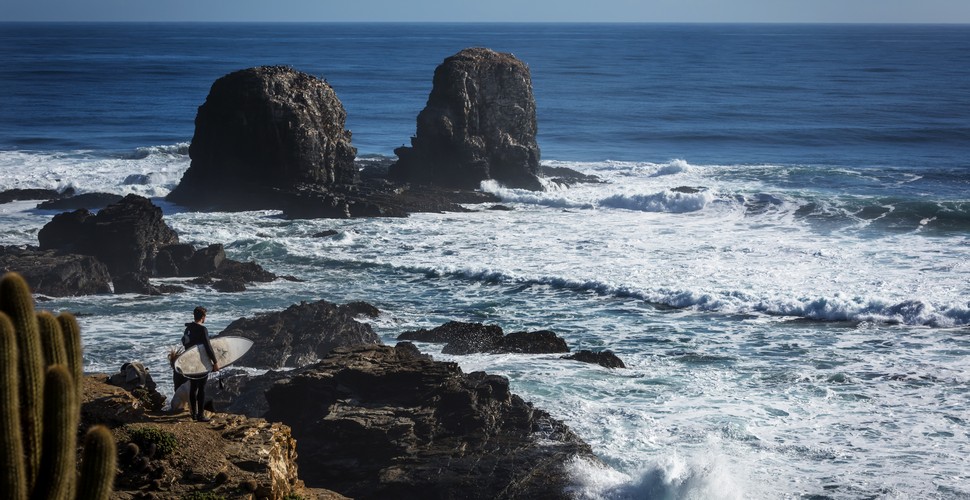
Pichilemu
Portillo Ski Resort
Portillo is the place to ski in Chilean Patagonia. Though it is famous as the place where the 200 kilometre per hour speed barrier was broken, and it's famous for its highly advanced ski runs, plenty of beginner and intermediate runs are also available. All ski runs are above the tree line and wide open, with lots of opportunities for off-piste and cross-country skiing. Heliskiing is also available for the adventurous!
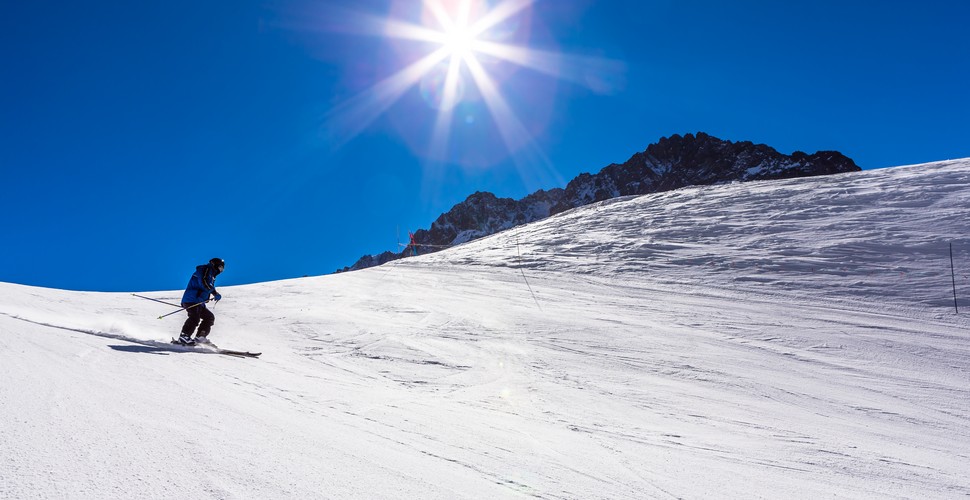
Portillo ski resort
Walk to Argentina
Between Villa O’Higgins, Chile and El Chaltén, Argentina is “no man’s land” and you can cross on foot in two or three days. In addition to the calm of the nearly deserted trail, you can enjoy the serenity of emerald lakes and distant snowy mountain peaks. From Villa O’Higgins, take the bus to the pier at Bahamondez, which will take you to Candelario Mancilla, where you can camp the first night. The next day you walk about 20 km to the Argentine border at Punta Norte of the lagoon del Desierto, then either walk or take a ferry to Punta Sur of the Laguna del Desierto. From there, take the bus to El Chaltén.
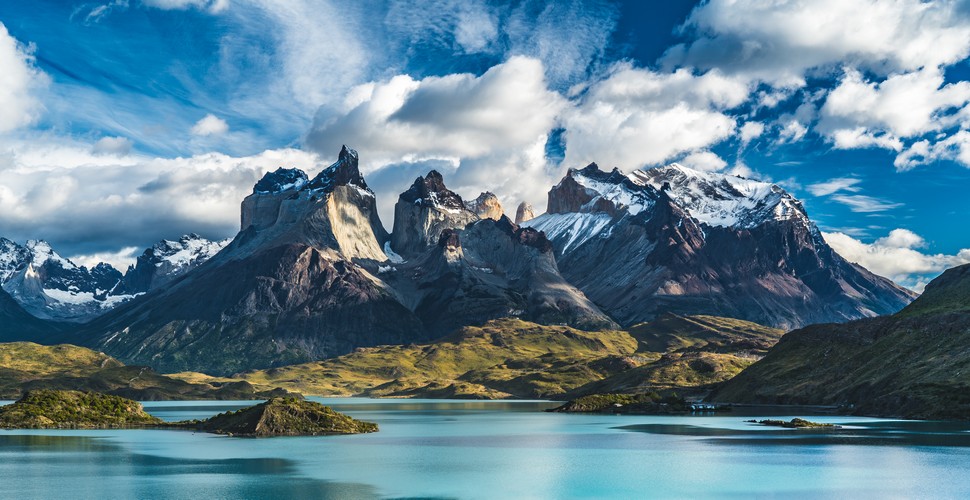
Villa O´Higgins
Mapuche cuisine
The Mapuche people are a native Chilean tribe, who were known for their independence, warfare activities, and hearty food. Even today, many traditional Chilean dishes originate from Mapuche recipes. To try traditional Mapuche cooking, head to Curarrehue, a Mapuche community just outside of Pucón. Expect local fruits like green plums and maqui berries, as well as llama, lamb, and horse meat as part of this traditional cuisine.

Mapuche grains
Take a Funicular Up a Hill
These boxcar cable cars can be found ascending and descending the Bellavista Hill in Valparaíso. Declared National Monuments of Chile, only seven are still working today, with restoration efforts taking place to increase their numbers. The cable cars date back to 1911 and can be taken for the 50-cent ride. Two of the most popular rides are the Ascensor Reina Victoria, which gives great views over the hills Cerro Concepción and Cerro Cárcel, and Ascensor El Peral, which offers spectacular views over the Pacific Ocean.
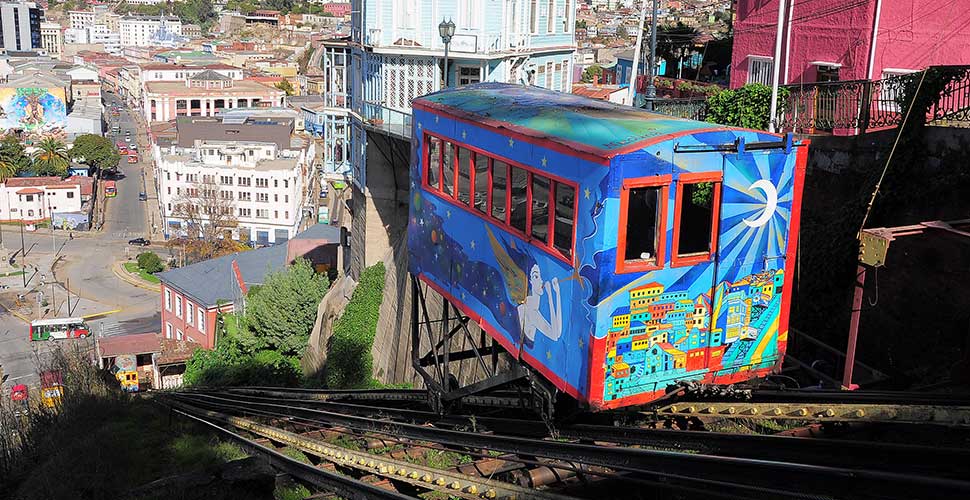
Valparaiso






